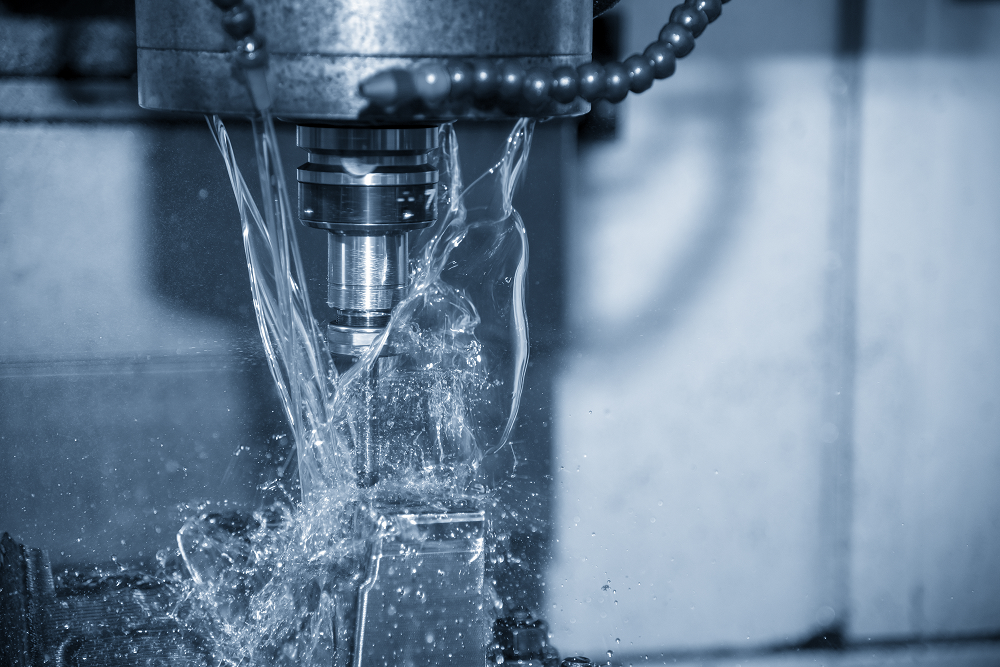Manufacturing materials, tools, and techniques continue to evolve, creating exciting opportunities for designers and engineers and new challenges for skilled factory workers to solve. As part specifications become more demanding in industries like aerospace, automotive, and medical equipment manufacturing, new metals have entered the market to fulfill them. The composites and materials in additive manufacturing, or 3D printing, have also become stronger and more durable than conventional metals and are growing in popularity.
It’s becoming the norm to use different types of metals and composites side by side in a single manufacturing facility. Shop managers have to accommodate the needs of these materials with carefully designed workflows and thoughtful consideration for which machinery, cutting tools, and coolant to invest in. Selecting the proper coolant is crucial as materials, machines, and processes continue to evolve. Here’s what you should look for in coolants for mixed-machining environments:
Wide Material Compatibility
The best way to simplify fluid purchases in a mixed-machining environment is to pick a fluid that’s compatible with most types of metals and composites. Unfortunately, some fluids are prone to staining certain types of metals or create a poor finish quality that’s difficult to correct, or even causes additional rework. Using coolants specifically suited for certain types of metals and running multiple coolants within a facility can increase fluid costs and create storage problems and can make fluid management more difficult
Maximum Lubricity and Cooling
Regardless of material type and the cutting operation you’re performing, the biggest challenge for any cutting fluid is to improve tool life and surface finishes while being material compatible. Traditionally, machinists used straight oils to lubricate the cutting tool and various types of emulsions to provide cooling and lubricity, but there has always been a trade-off between the these goals of the cutting fluid..
To combat this, the newest generations of TRIM® cutting fluids offer maximum lubricity and cooling ability without any trade-off. This makes them ideal for working with any kind of material.
Tramp Oil and Bacteria Resistance
All traditional cutting operations remove metal in the form of chips, fines, or shavings. When this removed material builds up in the sump, it creates the perfect environment for bacterial growth. Composites used in additive manufacturing are especially prone to producing fine chips and dust when cut. When this dust mixes with tramp oil in the sump, it can create a sludge that’s difficult to clean and which grows bacteria and other microbes. Prevent this issue by choosing cutting fluids that are naturally antimicrobial and reject tramp oil.
Indirect Cost Savings
Many new generations of metals, like advanced high-strength steels and 3D printing composites, are much more expensive than traditional materials. However, it’s possible to offset costs by reducing waste and improving efficiency. Your cutting fluid plays a key role in this. Look for coolants that extend tool life, perform at low concentrations, reduce scrap rate, and provide high-quality finishes so you can cut costs in every area of your operation.
TRIM® MicroSol® 692XT is a cutting-edge microemulsion compatible with an array of materials, including composites, aluminum, titanium, high nickel alloys, irons, and copper. The low foam formula keeps machines clean for less downtime and offers corrosion protection.
TRIM® HyperSol™ 888NXT has many of the same capabilities with such an unprecedented combination of lubricity and cooling ability that it marked a new neo-synthetic category of cutting fluids. In addition to its unmatched performance, the fluid is also 54% bio-based and made without mineral oil, making it one of the most eco-friendly products in the Master Fluid Solutions catalog.
To learn more about selecting the right cutting fluid for a mixed-machining environment, call 1-800-537-3365 or email us at [email protected] to learn more.

